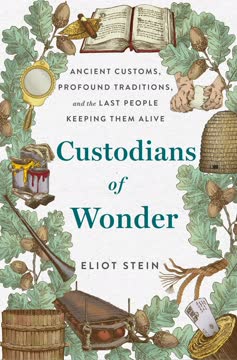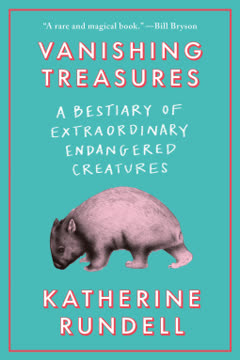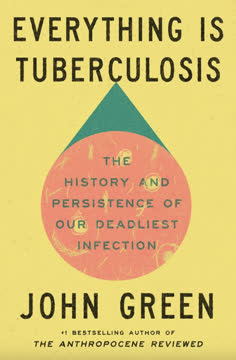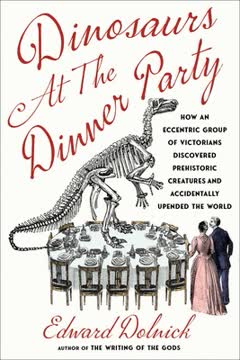Key Takeaways
1. A Cozy Worldview Shattered
“It is a happy world,” wrote William Paley in 1802, in one of the era’s most influential books.
Divine design. In the early 1800s, the prevailing worldview, championed by influential thinkers like William Paley, depicted a natural world flawlessly designed by a benevolent God. This perspective saw every creature, from whales to tiny muscles in the human eye, as a miracle of engineering, existing in perfect and eternal balance. This comforting belief provided a stark contrast to the chaos of the human world, ravaged by wars, poverty, and rapid industrialization.
Human-centric universe. This "happy world" was fundamentally human-centric, with the conviction that everything in nature existed for humanity's benefit and pleasure. Paley argued that even the deliciousness of food or the gentle fall of rain were proofs of God's special pampering of his favorite creation. This deeply ingrained belief made it almost unthinkable that the world could have existed for eons before humans or that creatures could vanish without divine purpose.
Unprepared for shock. This serene, ordered, and human-focused understanding of nature was utterly unprepared for the "shriek in the night" that was about to come. The discovery of ancient, monstrous remains would not only challenge the age of the Earth but also humanity's cherished place at the pinnacle of creation, forcing a radical re-evaluation of existence itself.
2. The First Glimpses of Giants
In 1802 no one had ever heard of dinosaurs.
Accidental revelations. The first hints of a prehistoric world emerged from unexpected places, like a 12-year-old farm boy, Pliny Moody, plowing his father's field in Massachusetts in 1802 and unearthing large, three-toed footprints. These "dinner plate"-sized tracks, made 200 million years prior, were the first dinosaur tracks ever found, though their significance was unknown at the time.
Mary Anning's triumphs. A decade later, Mary Anning, a poor, uneducated woman from Lyme Regis, England, became the most accomplished fossil finder. Despite immense personal hardship and societal barriers, she discovered:
- The first complete ichthyosaur skeleton (1811), a 17-foot-long "fish lizard."
- The first complete plesiosaur skeleton (1823), a bizarre, long-necked marine reptile initially dismissed as a hoax.
- The first flying reptile (pterosaur) in Britain (1828).
Her finds were "as strange and unexpected as any discovery in human history," revealing creatures unlike anything alive.
A world of bewilderment. These discoveries were met with profound bewilderment. Without any concept of "dinosaurs" (the word wouldn't be coined until 1842), people struggled to classify these immense bones and footprints. They were "as strange and unexpected as any discovery in human history," forcing a confrontation with the possibility of life forms that had ruled the Earth long before humans, a notion previously unimaginable.
3. Extinction: A Heretical Truth
A person or an animal could die, of course, but no one had ever dreamed that a species could die.
The unthinkable concept. Before the 19th century, the idea of extinction was almost universally rejected. It was believed that God, as a perfect designer, would not create flawed works that would simply vanish. The disappearance of a species was seen as a "dismemberment of the universe," a cosmic calamity that would unravel the entire natural order.
Early misinterpretations. When giant bones were found, they were often attributed to:
- Human giants (Robert Plot's "Scrotum humanum" for a dinosaur femur).
- Elephants (Plot's initial guess for the same bone).
- Mythical creatures like dragons or unicorns (Leibniz's "unicorn" skeleton, a hodgepodge of mammoth and rhino bones).
These interpretations reflected a desperate attempt to fit new evidence into existing, comforting frameworks.
Cuvier's definitive proof. Georges Cuvier, a brilliant French anatomist, definitively proved extinction in 1796. By meticulously comparing fossilized mammoth and "incognitum" (mastodon) bones with living elephants, he showed they were distinct species that no longer existed. He declared, "All these facts... seem to me to prove the existence of a world previous to ours, destroyed by some kind of catastrophe," shattering the notion of an unchanging creation.
4. Unveiling Deep Time
Earth had been created in 4004 BC (on the evening of October 22), according to the most widely cited figure.
Biblical timelines challenged. For centuries, the world's age was widely accepted as around 6,000 years, based on biblical calculations. This timeframe, though seemingly vast to human memory, was a "blink of an eye" geologically. The emerging science of geology, however, began to reveal a far more ancient Earth.
Sedimentary rock's story. The key lay in sedimentary rocks, formed by layers of sand and mud compressed over eons. The White Cliffs of Dover, for instance, composed of microscopic sea creature shells, stood hundreds of feet high, testifying to "eons heaped upon eons" of slow accumulation. This process, geologists realized, could not be squeezed into a few thousand years.
Halley's salty insight. Even earlier, in 1715, Edmond Halley (of comet fame) had deduced Earth's immense age by asking a simple question: why is the ocean salty? Rivers continuously carry small amounts of salt to the sea, and since the sea accumulates it without draining, its vast saltiness implies "a lot of time has passed since this story began." These revelations of "deep time" profoundly diminished humanity's perceived significance, making its history "shrink into insignificance."
5. Reconstructing Lost Worlds
It was a bit like trying to solve a maddeningly difficult jigsaw puzzle where a great many pieces had been lost, and pieces from different puzzles had been flung together, and no one had ever seen the picture they were trying to assemble.
Scanty clues, vast imagination. Early fossil hunters often had only a few bones or teeth to work with, making reconstruction a monumental task. Without any living analogues, imagination ran wild, leading to bizarre early depictions like Leibniz's two-legged unicorn, a composite of woolly rhino and mammoth bones.
Mantell's tropical England. Gideon Mantell, a country doctor, pieced together an ancient tropical landscape in Sussex, England, from fossilized palm trees, ferns, and large, herbivorous teeth. This was a radical departure from the known English climate and challenged the idea that all large herbivores were mammals. His "iguanodon" was initially imagined as a colossal lizard, 60-70 feet long.
Cuvier's anatomical genius. Georges Cuvier, the "father of paleontology," excelled at this "detective work." He could deduce an entire animal from a single bone by understanding the intricate, interconnected "animal machine." His work in the gypsum quarries under Paris resurrected dozens of extinct mammals, filling "the world previous to ours" with creatures like mammoths, mastodons, and cave bears.
6. The "Invention" of Dinosaurs
“The combination of such characters,” Owen wrote, “… all manifested by creatures far surpassing in size the largest of existing reptiles will, it is presumed, be deemed sufficient ground for establishing a distinct tribe or sub-order of Saurian Reptiles, for which I would propose the name of Dinosauria.”
A new category of giants. In 1842, Richard Owen, England's leading anatomist, coined the term "Dinosauria" (from Greek for "terrible lizard") to classify a new group of prehistoric animals. He identified three initial members:
- Megalosaurus (William Buckland's immense carnivore)
- Iguanodon (Gideon Mantell's elephant-sized herbivore)
- Hylaeosaurus (Mantell's armor-plated herbivore)
Owen's genius lay in recognizing shared anatomical features, like fused vertebrae and thick, column-like legs, that distinguished them from other reptiles.
Against evolution. Owen' used his "invention" of dinosaurs to argue against early evolutionary theories, which suggested primitive life forms at the dawn of time. Dinosaurs, he contended, were complex, sophisticated, and "majestically" designed, proving that life had not progressed from crude beginnings. This supported the idea of divine blueprints and a preordained progression towards humanity.
A lasting definition. Despite working with fragmented remains and lacking a full understanding of evolution, Owen's definition of Dinosauria proved remarkably enduring. His insights into their unique anatomy, particularly their upright stance and robust limbs, laid the groundwork for future paleontological understanding, even as later discoveries would refine their appearance.
7. Science and Faith in Uneasy Alliance
“If only the Geologists would leave me alone, I could do very well,” Ruskin moaned, “but those dreadful Hammers! I hear the clink of them at the end of every cadence of the Bible verses.”
A crisis of faith. The rapid scientific discoveries of the 19th century, particularly deep time and extinction, created a profound crisis for religious believers. The "dreadful hammers" of geologists seemed to chip away at biblical literalism, forcing a re-evaluation of scripture. Questions arose:
- How could creation fit into six days if Earth was millions of years old?
- Why did God create species only for them to vanish?
- Where did dinosaurs fit into the divine plan?
Strained reconciliations. Scientists, many of whom were devout clergymen, desperately sought to reconcile science and religion. They argued that biblical "days" were metaphorical "ages" and that "in the beginning" referred to a distant past, not the start of a week. William Buckland, for instance, suggested the Bible only focused on the human-centric part of Earth's history, ignoring prehistoric "saurians."
The "happy world" defense. Even the violence of the prehistoric world was reinterpreted as divine benevolence. Buckland argued that carnivores were instruments of mercy, providing quick deaths to prevent lingering suffering for herbivores. Hugh Miller contended that God wisely removed "saurians" to prevent "horrid, exterminating war," ensuring that "life is, in the main, enjoyment" for later, gentler creatures. These efforts, though sincere, often felt forced and artificial against the mounting evidence.
8. A Grand, Flawed Celebration
“The sensational statues acted on viewers in the same way frescoes affected early Renaissance worshippers,” writes the historian Zoë Lescaze.
A public spectacle. By the 1850s, the public had grown accustomed to the idea of immense fossils and deep time, and scientists were eager to celebrate their achievements. This culminated in Benjamin Waterhouse Hawkins's spectacular Crystal Palace Dinosaur Park, opened in 1854. It featured life-sized models of prehistoric creatures, including a 35-foot, 30-ton iguanodon, where a New Year's Eve banquet was famously held inside its hollow body.
Owen's vision materialized. These sculptures, meticulously crafted under Richard Owen's guidance, represented the cutting edge of scientific understanding. They depicted dinosaurs as majestic, mammal-like creatures, standing upright on column-like legs, reinforcing Owen's anti-evolutionary view of divine design and progression. The park drew millions of visitors, making prehistory viscerally real to a broad audience.
A flawed triumph. Despite their immense popularity and scientific significance, Hawkins's models were not entirely accurate by modern standards. The iguanodon, for example, sported a horn on its nose (now believed to be a thumb spike) and was depicted as a lumbering, rhinoceros-like beast, rather than the more agile, bipedal creature scientists now envision. This celebration, while grand, was a testament to a human-centric scientific narrative that was about to face its greatest challenge.
9. Darwin's "Murder" of the Old World
“It is,” he wrote, “like confessing a murder.”
The reluctant revolutionary. Charles Darwin, a reclusive Victorian gentleman, unleashed a scientific bombshell with On the Origin of Species in 1859. His theory of natural selection proposed a simple yet profound mechanism: organisms with slight advantages in the "struggle for existence" would survive and reproduce more successfully, leading to gradual, undirected change over vast spans of time.
Design without a designer. Darwin's most radical implication was "design without a designer." He showed that the intricate adaptations of life could arise through natural processes, without the need for a benevolent Creator actively shaping each species. This directly contradicted Owen's "archetypal light" and "divine blueprints," which posited a preordained progression towards humanity.
A world of chance and struggle. Darwin's theory replaced the "happy world" with a vision of nature "red in tooth and claw," where "from the war of nature... the most exalted object... directly follows." This meant:
- No preordained goal for life.
- Humans were not special, just another outcome of natural processes.
- Extinction was not a flaw but an inevitable part of life's ongoing, undirected story.
This "murder" of old certainties left many intellectuals "unmoored" and "disheartened," fundamentally altering humanity's perception of its place in the universe.
10. The Human Drama Behind Discovery
“Owen did not see that others paved the way for him,” one historian of science remarks. “Rather, they committed basic faults that he was at pains to rectify.”
Rivalries and ambition. The pioneering era of paleontology was marked by intense personal dramas, fierce rivalries, and eccentric personalities. Richard Owen, brilliant but manipulative, relentlessly cultivated powerful friends and undermined rivals like Gideon Mantell. Mantell, a tireless collector, saw his discoveries appropriated and his contributions downplayed by Owen, leading to bitter complaints of "want of honour, and I may say justice."
Eccentricity and dedication. Figures like William Buckland, Oxford's first geology professor, embodied the era's blend of scientific rigor and eccentricity. He lived in a house overrun with animals, served exotic meats (like hedgehog and mouse) at dinner, and mimicked dinosaurs for his students. His wife, Mary, was a crucial collaborator, assisting with dissections and illustrations, even as she recorded the "defunct rhinoceros" in their passage.
Unsung heroes and tragic ends. Many pioneers faced hardship and received little recognition in their lifetimes. Mary Anning, despite her unparalleled fossil finds, was excluded from scientific societies and struggled financially. Gideon Mantell, after selling his life's work to the British Museum (where Owen would benefit from it), died in pain, his spine preserved as a medical curiosity in Owen's museum. These human stories underscore the profound personal cost of scientific advancement in a rapidly changing world.
Last updated:
Review Summary
Dinosaurs at the Dinner Party offers a captivating look at how Victorian-era discoveries of fossils and dinosaurs challenged religious beliefs and scientific understanding. While praised for its engaging writing and interesting anecdotes, some reviewers felt it lacked focus on dinosaurs themselves. The book highlights key figures like Mary Anning and explores the societal impact of these findings. Readers appreciated the author's wit and ability to bring history to life, though some found the religious aspect overemphasized. Overall, it's considered an entertaining blend of history, science, and biography.
Similar Books




Download PDF
Download EPUB
.epub digital book format is ideal for reading ebooks on phones, tablets, and e-readers.





